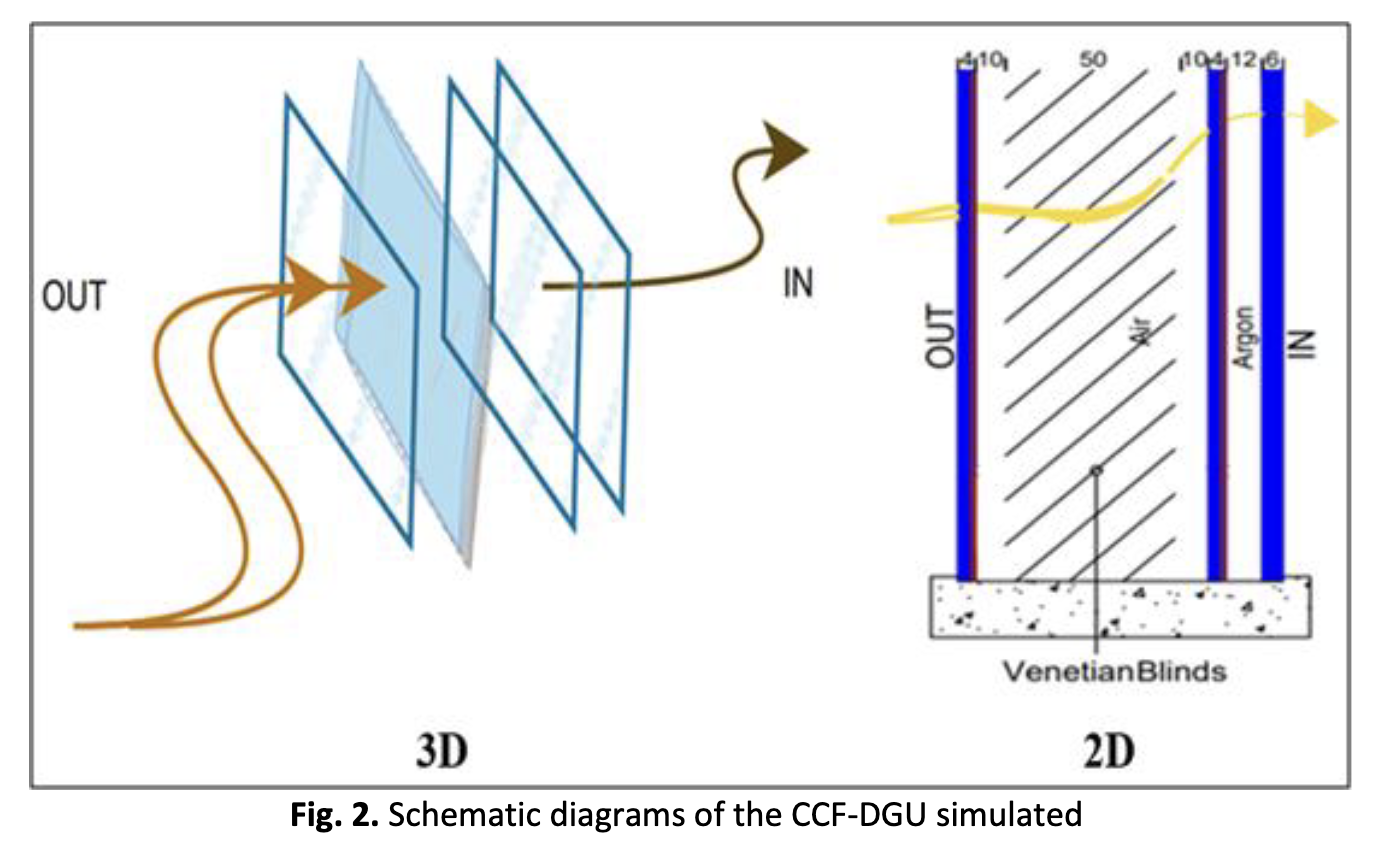Investigating the New Product CCF-DGU without Coatings for Thermal Comfort in a Tropical Indoor Environment
DOI:
https://doi.org/10.37934/ard.104.1.114Keywords:
Closed cavity, adaptive, façade, energy efficiency, thermal comfort, hot-humid climateAbstract
The fundamental concept of a closed cavity facade (CCF) may be described as an airtight and unventilated structure that integrates an automated shading system, double glazing on the interior surface, and single glass on the outside surface. The aforementioned technique efficiently controls the transmission of solar energy and natural light into the structure. A series of tests was conducted on several combinations of CCF-DGU designs using the software tools Window 7.8, EnergyPlus, and DesignBuilder. Subsequently, a comparative analysis was conducted between the aforementioned designs and the currently used single-glazed units (SGU) with a grey coating. The investigation was instigated by the use of a case study conducted on a condominium situated on Penang Island, Malaysia. The CCF-DGU has greater thermal performance and offers improved occupant comfort in comparison to SGUs. The CCF-DGU designs have shown a higher level of effectiveness in decreasing operating temperature ratios when compared to SGUs in the humid tropical climate of Malaysia. The yearly rate of reduction ranges from 81.22% to 96.85%, effectively achieving the necessary thermal comfort. The study emphasises the potential benefits of adopting an innovative CCF technology that is customised to suit the unique climatic conditions of Malaysia. The results indicate that the use of advanced glazing technology has promise for improving both operational temperatures and overall occupant comfort inside buildings.
Downloads























